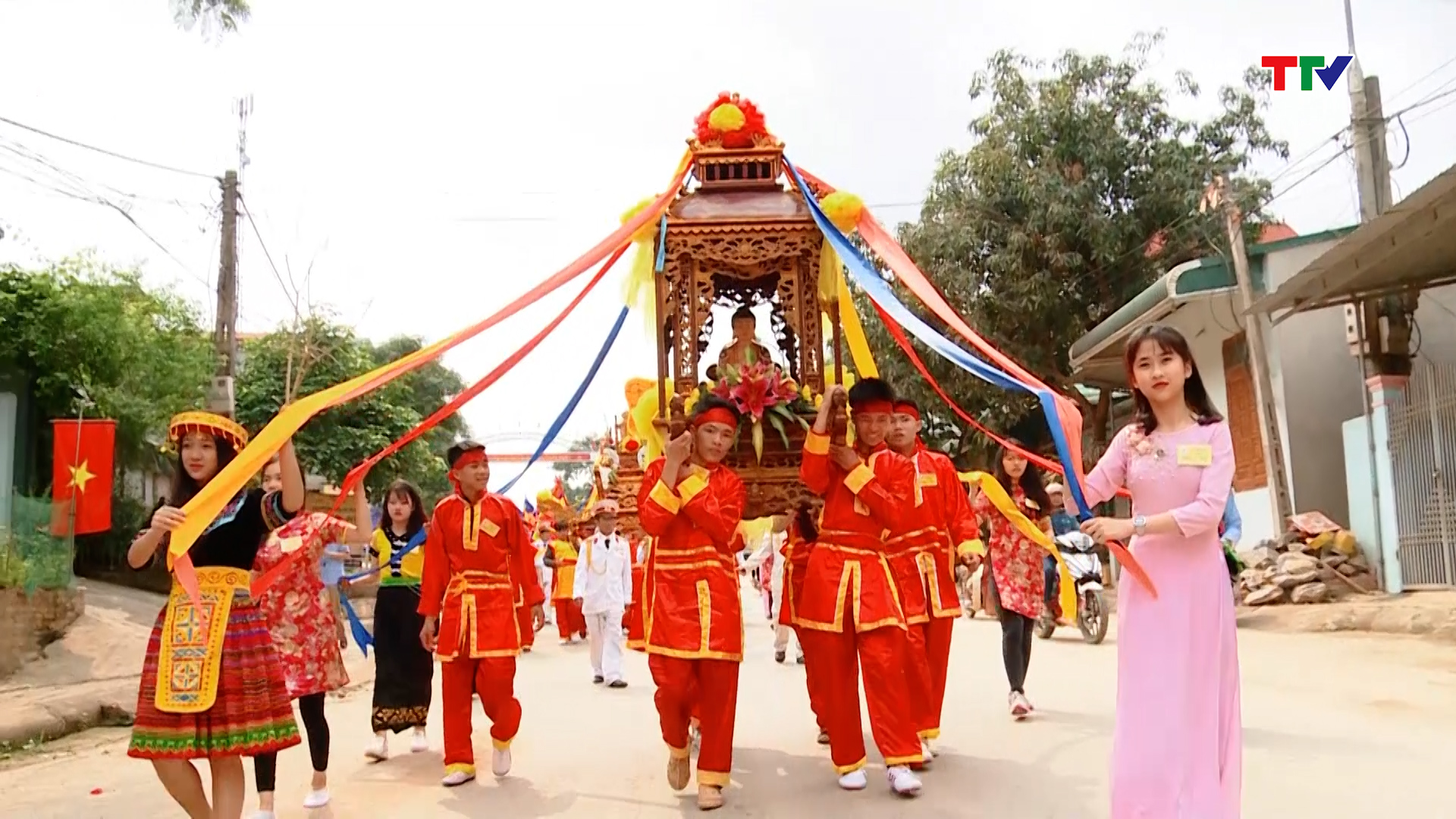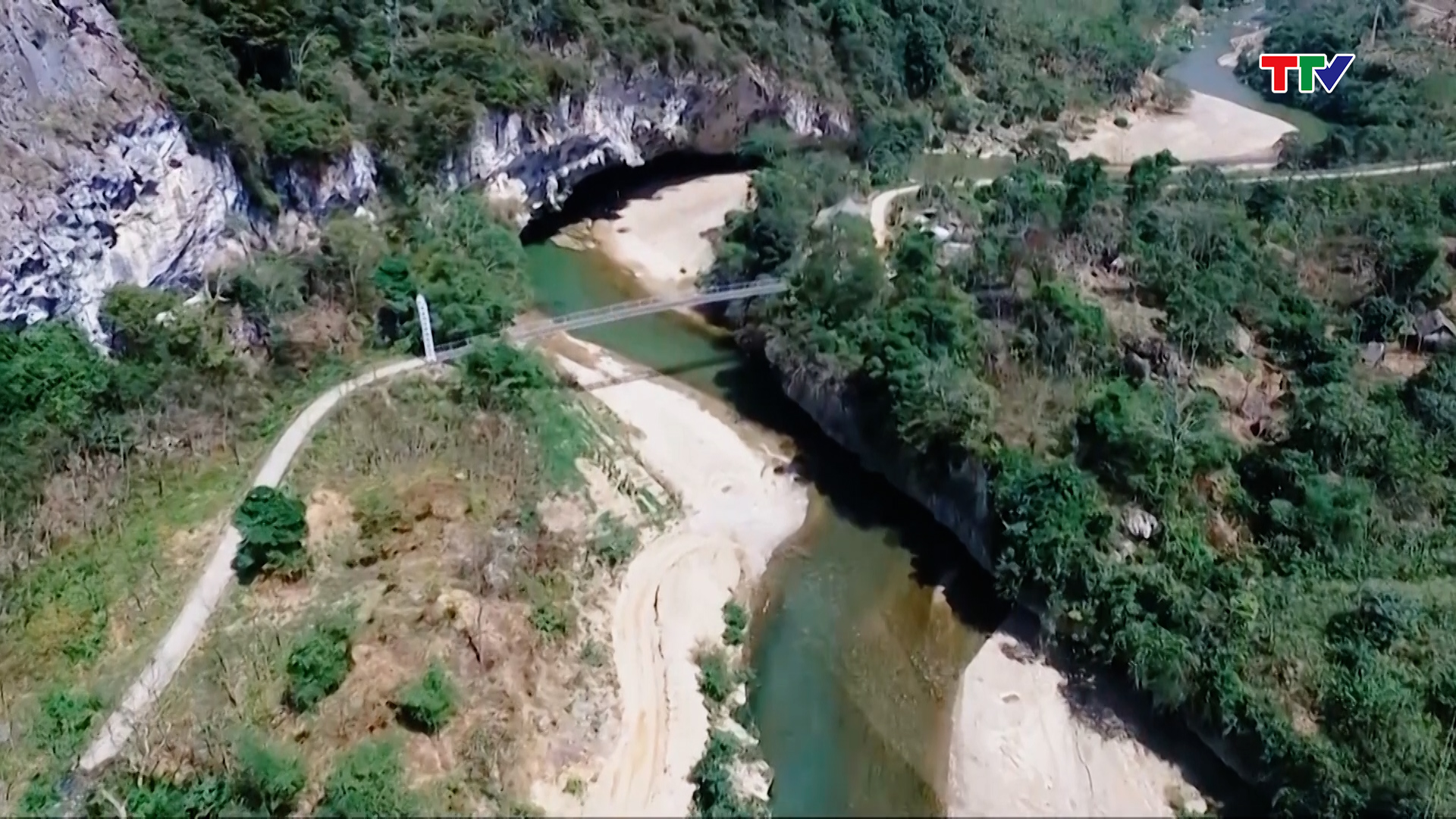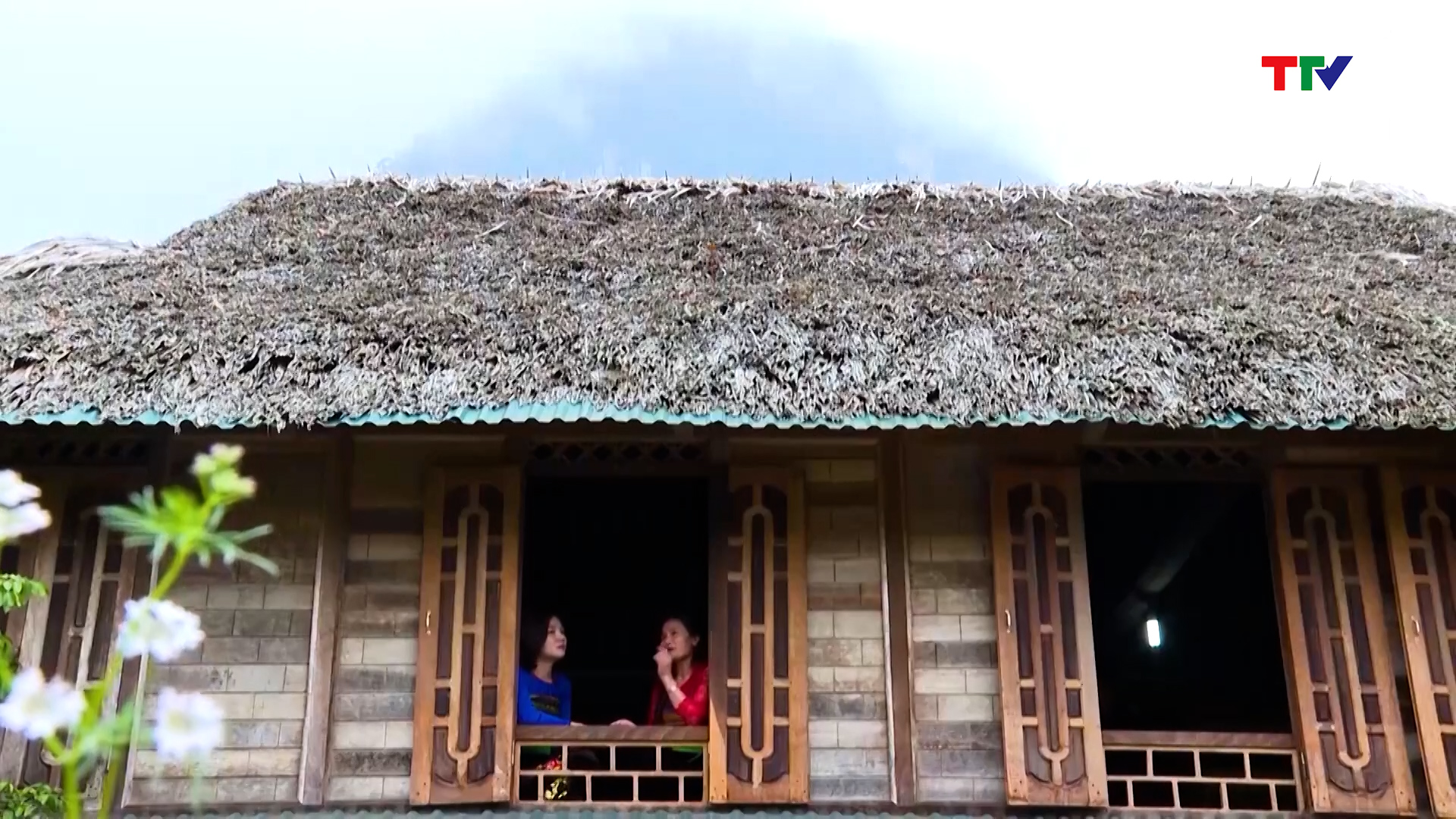Quan Hoa is one of the potential tourist destinations with many interesting activities from spiritual tourism, sightseeing, check-in,… Below are some Tet tourist destinations in Quan Hoa that you can refer to. . You can bring your family and friends to experience it to fully enjoy your vacation.
1. Ong Pagoda, Ba Cave
Blessed by nature with many forests and mountains, along with a unique cave system, the highland district of Quan Hoa still preserves unique relics associated with the lives and beliefs of ethnic minorities, especially the relic complex. The ruins of Ong Pagoda – Ba Cave are associated with the story of faithful love turning to stone.
Located at the foot of the mountain, the pagoda is on the left side of the Ma River (Hoi Xuan town, Quan Hoa district) looking across the river to Ba Chua Thuong Ngan cave. Rarely is there a relic on one side of Ong Pagoda and on the other side of Ba Cave. Around the birth and existence of the Ong Pagoda landscape, there are many legends of the local Thai people that are “half real, half fictional”.



Legend has it that, after Le Loi ascended the throne in 1428, the king appointed Mr. Lo Kham to the position of Lieutenant General to command the army, with Dr. Chuong Nghe and mandarin Sima assigned to manage and guard the northern border area. West of the country.
At the mouth of the Lo River, after setting up camp to rest, that night he had a strange dream: “He was going to a water trough to bathe, the water trough was big, the white water covered the entire hillock area behind the village. He was bathing when suddenly There was a big snake wrapped tightly around his body, he screamed and struggled…”
When he woke up, he told the story to the soldiers and mandarins, then went to the top of Muong Muong to see the land position and feng shui and chose Muong Ca Da to build a fiefdom and barracks, and together with the people, reclaim wasteland and villages. rich. One night while thinking about how to defeat the remnants of the Ming army at Phi cave, Monsignor came to him in a dream and showed him how to fight the enemy. After that, he built a new wooden temple in the Lao national style, calling it San Ca Da (present-day Ong Pagoda).
Ong Pagoda – Ba Cave is not as big and massive as other pagodas and caves. Around Ong Pagoda – Ba Cave area still retains a relatively pristine ecosystem and rich and enchanting cave system. Visitors to the land of Muong Ca Da will also be immersed in many fascinating legends and long-standing customs and traditions of the Thai people in the upper reaches of Thanh…

Every year, especially in the spring, ethnic people in the region and tourists from all over often come to visit Ong Pagoda and Ba Cave to burn incense and pray for luck, happiness, and peace in life. From Ong Pagoda and Ba Cave, visitors can take a boat ride on the Ma River and Luong River to reach the interesting burial site at Po Cung Cave. Recognizing the importance of Ong Pagoda and Ba Cave, Quan Hoa district has restored and embellished to promote the value of the monuments associated with sustainable spiritual tourism development.
2. Temple worshiping the General who commanded the Kham Ban army – Muong Ca Da Festival

Lieutenant General Kham Ban was a talented leader, good at martial arts, and had the merit of helping King Le Loi expel the Ming invaders from our country. His temple is located on the slope of Pom Keo hill in Kham village, Hoi Xuan commune. The path to the temple is low stairs so visitors can easily move. The fresh air, quiet and sacredness make this place an ideal stop on a spiritual tour.
The general who commanded the Kham Ban army was also the one who founded Muong Ca Da around the 15th century. Muong Ca Da Festival is a traditional festival of the ethnic community of Quan Hoa district, held every 5 years around the second lunar month. This is an opportunity for the people here to remember the talented general of Le Loi, who had many merits and gratitude to the Le court.
3. Co Phuong Cave
Co Phuong Cave belongs to Sai village, Phu Le commune. The word Co Phuong in the local language means Starfruit Tree. This place was fiercely attacked during two great national defense wars. In particular, this was once an important base serving the Dien Bien Phu campaign. The story of Co Phuong cave in Sai village is a tragic story about many young volunteers and frontline workers in their youth who heroically sacrificed their lives while on duty.

The cave has an area of about 20 square meters, with two entrances. The deeper you go inside the cave, the narrower it becomes. Surrounding it is the Po Ha rocky mountain area, about 60m long and 40m wide, with extremely beautiful stacked stone slabs.
4. Hang Phi


Phi Cave, also known as Ma Cave, Lung Mu Cave on Pha Cang Mountain, Kham Village, Hoi Xuan Commune. This is a burial site that was discovered early and has the largest number of coffins in the cave in Vietnam.
Archaeologists have discovered ancient Thai graves dating back more than 700 years, at an altitude of tens of meters. Mysterious and sacred stories about ancient burial customs become an unforgettable highlight when visitors enjoy this ecological complex.
5. Hang village community tourism



Thanks to the blessings of nature and intact cultural values, Hang village in Phu Le commune is one of the few villages chosen to develop a community-based ecotourism model. The Homestay type has attracted a large number of tourists here, especially foreign tourists. This place is also an attractive tourist destination connecting eco-tours to Lac village (Mai Chau – Hoa Binh), Pu Luong nature reserve and other tourist destinations inside and outside the province.
6. Ban But Nam Xuan Commune
Ban But, Nam Xuan commune, Quan Hoa highland district, Thanh Hoa province is blessed with poetic and lyrical scenery by nature. When coming to But village, visitors can not only immerse themselves in the beautiful natural beauty, but also discover the cultural values imbued with the identity of the Thai ethnic people. Ban But is about 150km from Thanh Hoa city center. The village is located in a large valley, surrounded by more than 1,000 hectares of primeval forest, with a cool and fresh climate all year round. This is where 105 Thai ethnic households live.
Having gone through many ups and downs, Up to now, But village still preserves the traditional stilt houses with typical architectural features that are the highlight in the beautiful picture of this mountainous region. The Thai ethnic people here still preserve many cultural features imbued with traditional identities, such as: games of agility, shuttlecock throwing, crossbow shooting, stilt walking, tug of war…; Besides, the people of But village also preserve a rich and diverse culinary culture that has been preserved for many generations, such as: five-color sticky rice, grilled stream fish, grilled fish, grass pork, sloping fish salad, Lam rice, banh u… villages and hamlets all have conventions and traditions.




It would be a mistake to come to But village and not enjoy the beauty of Pha Day lake. To fully enjoy the pristine, gentle, and liberal beauty of Pha Day Lake, visitors can take a dugout boat.
7. Glory Lake

This is a natural lake located in Vinh Quang village, Phu Nghiem commune. Here visitors can immerse themselves in the vast space, charming mountains and water, and admire the natural scenery. Along with that, there are boating and fishing excursions, and especially visitors can enjoy the delicious flavors of grilled chicken and extremely attractive Lang fish soup.